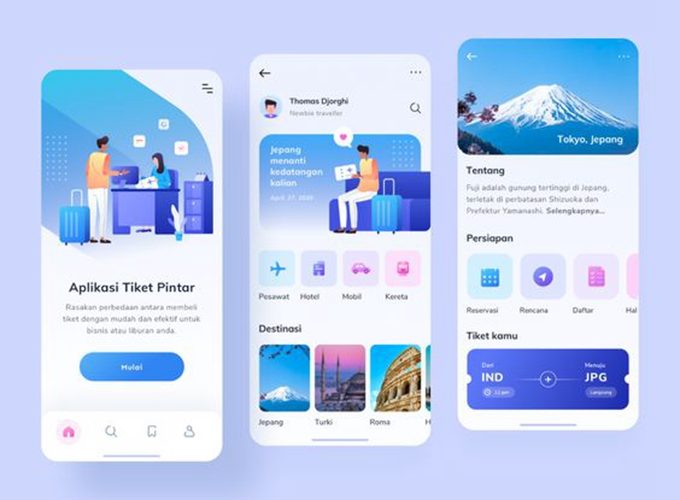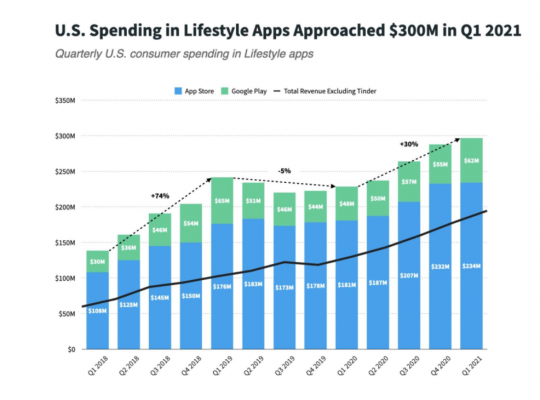Return on advert spend (ROAS) is the holy grail of cell advertising and marketing measurement, particularly now within the publish iOS 14.5 period, when calculating ROAS has grow to be a difficult job for advertisers.
The calculation by itself is easy. Nonetheless, to calculate, you need to combination the associated fee and match it to attribution and income, and that is turning into extra advanced than ever.
Table of Content
This weblog publish will floor a few of these points and share the completely different approaches to options. Let’s deep dive into it.
Why is ROAS so onerous to measure in a privacy-centric world?
Matching price and attribution information has all the time been a giant problem for advertisers, primarily as a result of information fragmentation throughout advert networks.
The common marketer works with a number of advert networks, and each advert community has its personal information scheme, enterprise guidelines, enterprise fashions, information refresh charge, and so forth. The shortage of standardization has made it tough to normalize price information and mix it with attribution.
With the onset of the Apple iOS 14.5 launch and ATT framework, a number of types of attribution developed, resulting in extra information fragmentation: SKAdNetwork (SKAN), privacy-centric attribution, web-to-app and others. The a number of types of attribution have resulted in new information challenges.
What points have been created by the brand new types of attribution?
1- Various information granularities throughout price and attribution for a similar advert community.
For instance, Community A studies on spend on the marketing campaign, adset, advert, and county ranges. Nonetheless, for attribution, Community A has two completely different ranges of granularity. One is for SKAN, and one other one for all the pieces else. For SKAN attribution, the reporting hierarchy is on the marketing campaign stage.
The reporting hierarchy is identical for the remaining campaigns as the associated fee is getting reported. Primarily based in your objective and what you’re making an attempt to optimize, you need to mix the info on the proper granularity stage.
Typically, you’ll even should retailer the identical information twice and use it otherwise. And for those who’re working with extra companions, you need to make these changes repeatedly. As you might need seen already, this isn’t a easy job.
2 – The accuracy of the info – Within the new setting, the efficient price per set up (eCPI) and ROAS aren’t 100% correct. And with out correct measurement of those indicators, it’s onerous to optimize campaigns or allocate new budgets to channels.
The issue is that these numbers deviate from the reality due to overlapping installs throughout SKAN and the non-SKAN attribution strategies. As well as, the associated fee is reported with out the SKAN distinction (a marketing campaign is a marketing campaign).
So whenever you take a look at SKAN attribution studies, you see one quantity, and whenever you take a look at the non-SKAN attribution studies, you see one other. How have you learnt which one to consider? There isn’t a magic technique right here. And since ROAS and eCPI are important KPIs, it has monumental ramifications.
Approaches to take care of these points
There are a number of methods of addressing information points, and each strategy has its professionals and cons.
Method 1: Do it your self, manually
Each time you optimize a marketing campaign, you may obtain a report from the advert community dashboard and carry out the matching in a spreadsheet by your self.
PROS
- An affordable resolution
- Anybody can do it
CONS
- Handbook work takes time. Analysis has proven that the typical marketer spends a 3rd of their time on repetitive duties.
- Information accuracy is all the time in danger, as handbook work is usually vulnerable to errors. Information inaccuracies are the results of making the fallacious choices based mostly on the fallacious information.
Method 2: Do it your self, programmatically
One other technique is to develop the connection to the accomplice APIs your self and piece it collectively along with your attribution information.
PROS
- Saves you the handbook work.
- Permits scale as you develop your advertising and marketing efforts.
- Probably the most versatile possibility since you personal all the pieces, which suggests it’s extra appropriate for giant groups. Utilizing this technique, you may decide when to tug the info, in what granularity, format, learn how to match it to attribution, and so forth.
CONS
- This selection de-focuses you out of your advertising and marketing work. As a substitute, you’re targeted on constructing a knowledge aggregation product that’s not your most important focus.
- Excessive price. Creating and sustaining API integrations with advert networks is resource-intensive. You’ll should pay for the cloud price and for the workforce of engineers who’ll must assist this technique.
- The information is advanced, and figuring it out takes time. For instance, when the identify of a marketing campaign modifications, all of your price and attribution matchings may break. Your system should assist this state of affairs, amongst many others, to supply the best stage of accuracy.
- Lastly, when introducing new companions, you’ll want to carry off till their integration is totally developed.
Method 3: Use a price aggregation software program
A distinct strategy may very well be utilizing a third celebration software program to combination your price and match it to attribution in your inside BI system — programmatically.
PROS
- Saves you the handbook work
- Extremely scalable
- Price aggregation software program is extremely specialised
- When able to introduce new companions, your necessities are probably coated
CONS
- It’s not your most important enterprise focus.
- Complexity. You’ll should just be sure you’re getting the info from two completely different sources (price and attribution), scheduling the ingestion to your BI accordingly, and managing the various information granularity ranges.
- Price-intensive. When selecting this feature, you’ll must pay an attribution vendor and a price aggregation vendor along with the cloud price designated for managing the info in your BI.
What about my ROAS and eCPI?
In relation to your ROAS and eCPI, you may’t deduplicate the SKAN and non-SKAN set up information by your self. Neither can the advert community. Until your attribution accomplice does that for you, your eCPI and ROAS will proceed to be inaccurate when utilizing any of the choices talked about above.
The explanation for that is that the SKAN information is anonymized; the postback advertisers get from Apple accommodates solely attribution particulars and conversion worth. In different phrases, it’s not possible to hyperlink the postback to a selected consumer resulting from Apple’s privacy-preserving options — like randomized delays in firing the postback.
Due to that, it’s not possible to find out whether or not the identical occasion was attributed by a couple of attribution technique.
Price and attribution are higher collectively
There’s one other resolution: your MMP. In case your attribution accomplice aggregates price, you will get price and attribution information utilizing the identical platform. When that’s the case, your attribution accomplice can handle the SKAN versus non-SKAN attribution strategies whereas matching it to price.
Let’s return to Community A. On this instance, you’d get price information on the marketing campaign stage for SKAN, and the marketing campaign, adset, advert, nation, and channel ranges for non-SKAN. On this case, your attribution accomplice connects the associated fee information on the proper granularity stage based mostly in your objectives, be it SKAN or non-SKAN.
That’s precisely what AppsFlyer’s Xpend does. As a substitute of specializing in constructing a complicated system, pulling the info manually, or matching it to attribution, you may view your price with the analytical dashboards, and/or pull the associated fee tied to attribution information on to your inside BI system through Price ETL.
You may be pondering. OK, however how would I deduplicate installs and get correct ROAS information? AppsFlyer just lately launched its first-to-market Single Supply of Reality (SSOT) resolution, that enables advertisers to deduplicate the overlapping installs.
Our information exhibits that as much as 35% of installs could also be reported twice, which solely goes to point out how inaccurate your advertising and marketing measurement is. Since Xpend gives the various granularity of SKAN price, all you should do is begin analyzing the info within the correct context.
So, for those who’re now wanting on the SKAN, natural, or non-SKAN metrics, you may see the proper variety of installs alongside your price, ROAS, and eCPI. As a substitute of getting confused by the info, you may deal with optimizing your corporation by making choices based mostly on essentially the most correct information.
Abstract
As we noticed, measuring ROAS and eCPI on iOS 14.5+ shouldn’t be a simple job, primarily due to:
- Information fragmentation throughout advert networks and SKAN/non-SKAN attribution
- Inaccurate price information
There are a number of approaches for fixing these issues, and the advisable possibility is to depend on a single platform to offer you essentially the most correct information on the most granular stage — and on the proper time.






